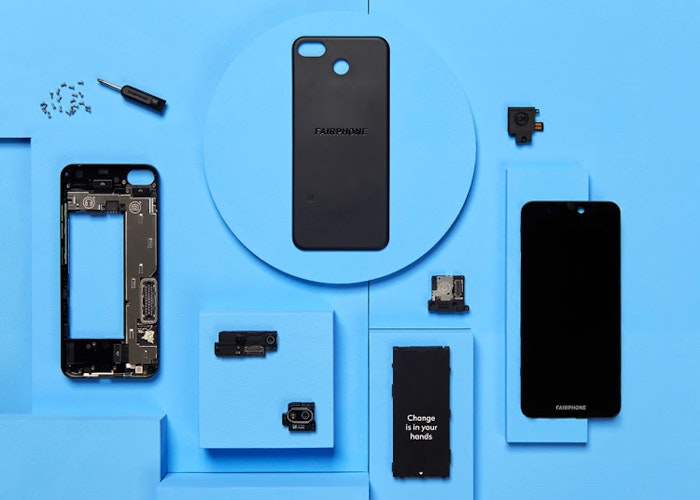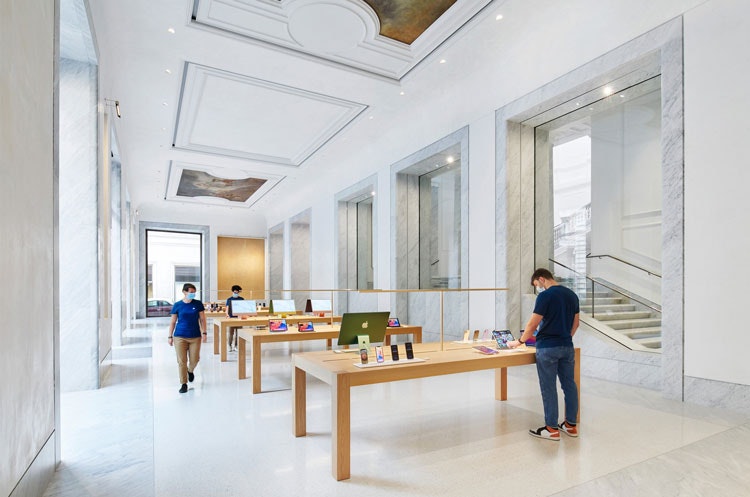The UK government recently announced legislation aimed at tackling premature obsolescence. Expected to come into force from this summer, the new rules will mean manufacturers of white goods will need to build spare parts so products can be easily repaired. This is a victory for sustainability campaigners – with the lifespan of goods expected to increase by up to ten years – and for consumer champions, as customers are no longer forced to buy new fridges and washing machines every few years.
To ensure compliance, consumer goods manufacturers will need to invest in expertise across a range of disciplines; from product design to supply chains, retail and branding. An entire range of customer services will also need to be developed in order to deliver this significant change effectively.
Even for brands with products not yet included in the legislation, such as TV and mobile phone manufacturers, the risk of doing nothing is very real. Today, publications already include sustainability ratings as part of their product reviews. And Gen X and milllenial consumers are more aware than ever of their environmental impact. Consumers relate to brands that do good for the planet and people and they expect to see concrete positive actions from brands.
Brands that don’t tackle premature obsolescence face becoming obsolete themselves

Brands that don’t tackle premature obsolescence within their product line face becoming obsolete themselves. Despite the challenge, this new sustainable legislation can be a huge growth opportunity too. Forward-thinking businesses that approach sustainability through the lens of branding have the chance to become pioneers. By getting ahead of top-down legislation, and creating bottom-up change instead, they stand to reap the rewards of leading sustainably.
While many businesses today want to talk about sustainability, consumer brands aren’t owning up to overconsumption and premature obsolescence. Government intervention is a welcome nudge in this respect. But it also presents an increasingly profitable revenue opportunity. Products that last ten years longer – a timeline this legislation hopes to achieve – will effectively keep customers in a brand’s eco-system for far longer than they do today.
Ending premature obsolescence is a huge innovation challenge and meeting it will require creativity, flexibility and collaboration. Product designers, retail specialists and supply chain consultants have a brilliant opportunity to work together on this next chapter and set extraordinary benchmarks while doing their bit for the planet.
Product design needs to get ahead of the curve

New design, technology, processes and materials will need to be developed so brands can offer the spare parts now mandated by the government and meet updated energy efficiency standards. This is a big ask for those manufacturers that need to become compliant by this summer. It’s also going to be a challenge for other consumer goods manufacturers to develop this expertise, even if they aren’t yet under a legal obligation to adapt just yet.
This could provide an opportunity for brands to refocus their product offer through pioneering forms and functionality that can change consumers behaviours for better. We need to move to a mindset of designing for regeneration – to endure first, and be renewed second.
Some brands are already leading the way to a more sustainable future, providing a helpful comparison for eco-conscious consumers for the brands not playing their part. Dutch company Fairphone, for example, produces modular mobiles that can be easily repaired and updated. Rather than having to buy a new smartphone every two years – contributing to the UK’s 1.45 million tonnes of annual electrical waste – Fairphone owners can simply upgrade their existing handset. The brand is showing that a different type of product development and ownership is possible – manufacturers of all types have a lot to learn from its modular approach.
Immersive retail spaces could breathe new life into the high street

The right to repair is an important part of the new legislation. As brands embrace new sustainable product design practices, these will need to be expressed through the retail experience too.
Fashion brand Freitag already leads the way here. The Swiss company’s stores are like experiential factories, where customers are immersed in the product creation from beginning to end. They can design and create their own bags instore, choosing the colour, material and the pattern. The customer-cum-designer even creates their own dummy template using cutters and welding machines. Only at this point does the Freitag crew step in, to sew and rivet while customers relax with a drink.
As the future of the high street remains in question, perhaps the big brand repair or concession shop can be a way of breathing new life into our town centres through localised assembly. As Freitag has shown, this does not need to be an uninspiring industrial unit, but can be ‘make from scratch’ stores where the brand and initial production experience is brought to life in new and meaningful ways.
We need to democratise the repair process

Offering repairs and upgrades instore is one thing, but how do electrical goods manufacturers ensure they service all customers? By way of illustration, Apple has 511 stores around the globe, but there are more than 1.65 billion of its devices in circulation worldwide. The obvious response is to offer repair services in customers’ homes. For example, online store I Fix It offers fixing kits and repair guides for brands such as Teenage Engineering and HP. However, this may still be overtly technical for some: we need to democratise the repair of these objects to make the process more accessible and inclusive for all consumers.
This is more straightforward today, as Covid has opened us up to a world of Zoom workshops and tutorials. We’re now familiar with online experiences like cocktail mixing and sushi making. Brands can tap into this culture shift to offer the perfect home repair centre. The harder part is making the experience a unique and ownable moment for brands.
We need to move away from bland packaging experiences for repair parts, and embrace unboxing experiences that are clear, intuitive and reflect a brand’s purpose. One brand that does this well is The Workbench which offers at-home ring carving kits in sleek branded boxes to their customers, as an alternative at-home brand experience to their live workshop masterclasses.
By Landor & Fitch industrial design lead Jack Holloway

- Design disciplines in this article
- Industries in this article
- Brands in this article







